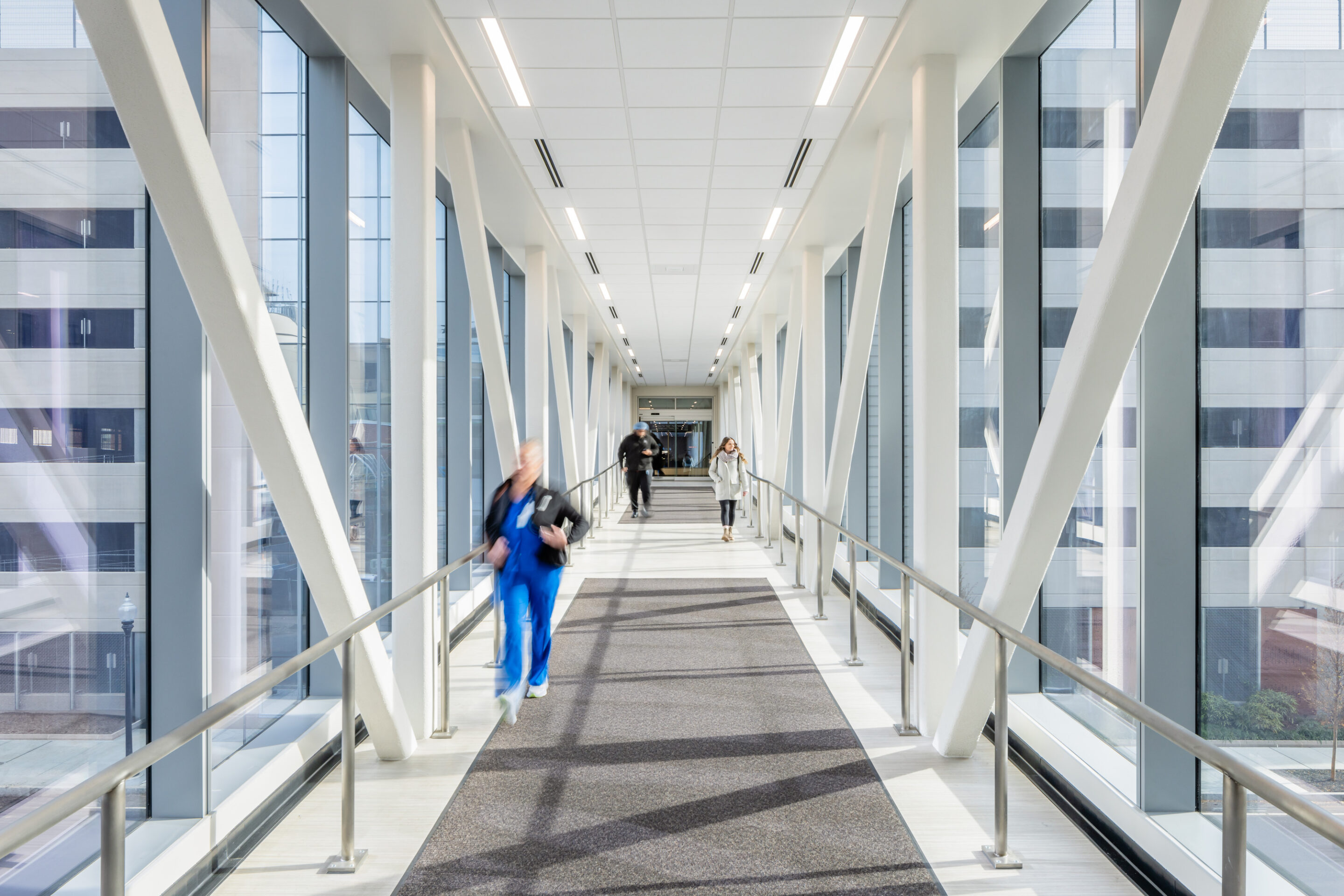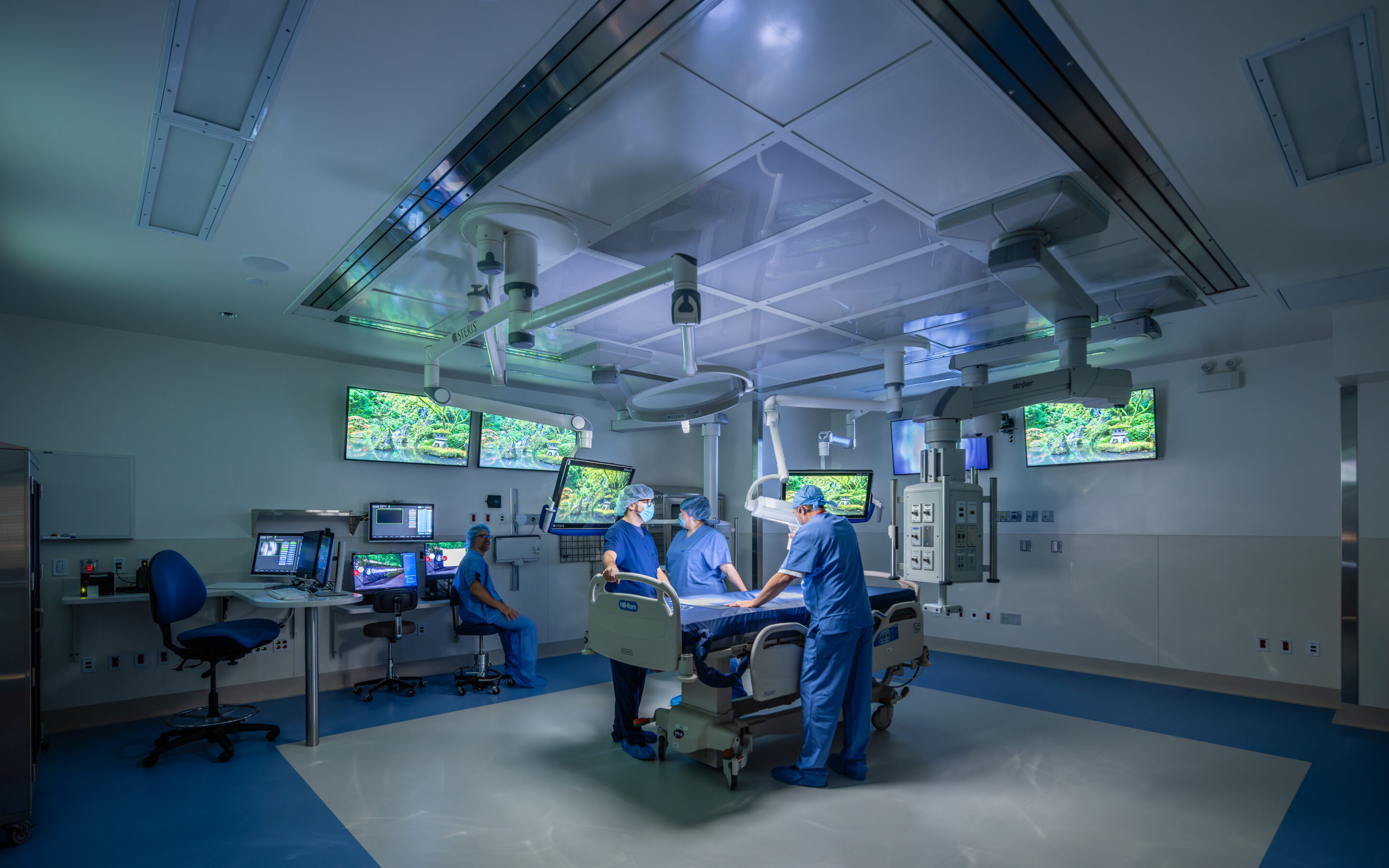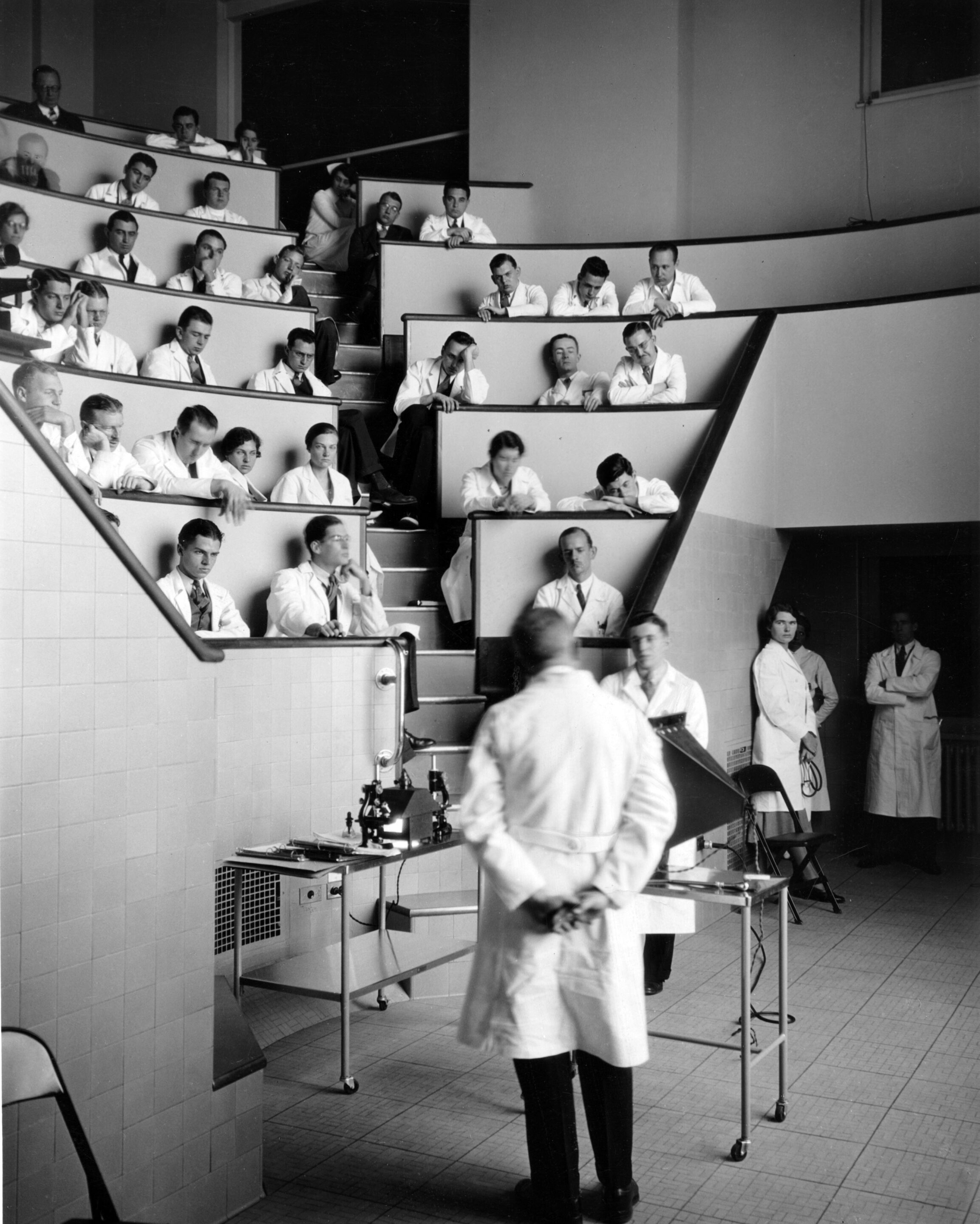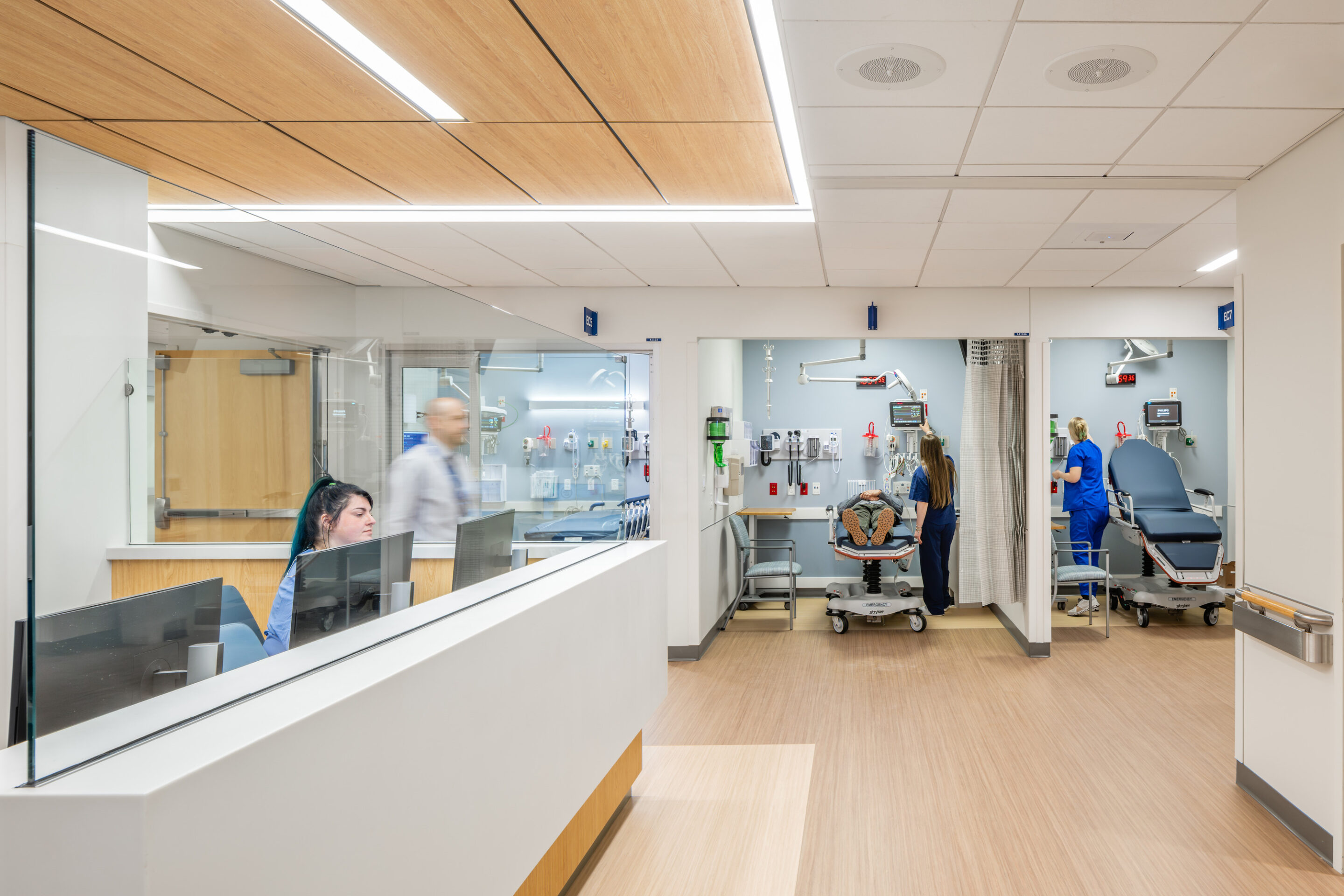Lights, Camera, Action: Healthcare Design through the Lens of Pop Culture
by Angela Watson, FAIA, LEED AP, and Jennifer Aliber, FAIA, FACHA, LEED AP
When you think of hospitals on TV, what comes to mind? Sleek glass walls, dramatic helicopter landings, and doctors delivering life-saving care in impossibly large operating rooms. For decades, medical dramas have captivated audiences—but they’ve also influenced how we imagine healthcare spaces.

The Mayo Clinic’s East Expansion balances beauty and function as part of an overarching campus-wide growth strategy aimed at boosting the growth of Mayo Clinic’s clinical and surgical capacity.
From Heroic Doctors to Gritty Realism
Early shows like Dr. Kildare and Marcus Welby, M.D., portrayed physicians as omnipotent heroes in pristine, modernist hospitals. These environments reflected an era when healthcare was seen as something “done to you”—a higher power on a hill.
Dr. Kildare (NBC, 1961–1966) and Marcus Welby, M.D. (ABC, 1969–1976) portrayed physicians as virtually infallible heroes. The intro to Dr. Kildare (above) shows the physician in complete control of a dire, dramatic situation.
St. Elsewhere (NBC, 1982–1988) and ER (NBC, 1994–2009) broke away from the pristine ideal, introducing chaos, urban grit, and flawed characters.
Fast forward to the 1980s and beyond, and the tone shifted. Shows like St. Elsewhere and ER introduced chaos, urban grit, and flawed characters. Technology played a role too—Steadicam shots brought viewers into the frenetic pace of emergency departments, creating a visceral sense of urgency.
Design Trends and Cultural Expectations
Pop culture doesn’t just entertain—it sets expectations. Patients and families often arrive at real hospitals with mental images shaped by TV. Yet, reality rarely matches fiction:
Pop Culture Tropes
Pristine Modernism: Clean lines, white walls, and reflective surfaces dominate early portrayals.
Helipads, Long Hallways, and Rooftops: Frequently used for high-stakes drama and existential conversations.

While this skywalk at Yale New Haven Health’s St. Raphael’s Campus reflects the scenic backdrops of medical dramas, it serves as a direct access point rather than a meeting space. Photo by Raj Das.
- Oversized Patient Rooms: Often styled like boutique hotel suites, complete with lamps and vertical blinds— elements you’ll almost never find in actual healthcare settings.
- Observation Balconies in ORs: A dramatic device for storytelling, but obsolete in modern surgical suites.


While operating theaters such as our design for the New York Hospital Cornell Medical School, which was completed in 1932, were once common place, this feature is now primarily only found in medical dramas. This operating room in Boston Children’s Hospital reflects typical layouts of modern hospitals. Photo by Raj Das.
Warm Materials in Later Eras: Shows like Grey’s Anatomy introduced wood tones and artwork, echoing real-world trends toward biophilic design.
Reality Check
From Public Spaces to Patient Rooms: The 1990s brought a focus on private rooms and family-centered care.
Patient bays in the emergency department of Yale New Haven Health’s St. Raphael’s Campus balance patient privacy with healthcare workers’ need for fast-track care. Photo by Raj Das.

Staff Well-being: Today, design considers not just patients but the clinicians who deliver care.
Technology Integration: Robotic surgery and telehealth spaces are now part of the architectural conversation.
Biophilia and Healing Environments: Natural light, indoor gardens, and calming materials became central.
Outdoor gardens at Boston Children’s Hospital’s Hale Family Building offer patients, families, and staff green spaces with native plants, walking paths, and a variety of seating, to foster moments of connection, reflection, and respite. Landscape Architecture by Mikyoung Kim Design. Photo by Robert Benson.

The Grey’s Anatomy Effect
One of the most surprising findings? Media can distort medical realities. Studies show viewers of medical dramas often believe CPR is successful most of the time—when in reality, survival rates are far lower. These misconceptions can influence critical decisions like DNR orders.
Why It Matters for Designers
Healthcare design isn’t just about meeting codes and clinical needs—it’s about shaping experiences. Pop culture creates powerful narratives that influence what patients, families, and even staff expect from their environments. As designers, we need to understand these perceptions and respond thoughtfully. While design can transform not just care delivery but entire communities, today, we’re moving beyond public spaces and patient rooms to consider staff well-being—because design impacts everyone.
Looking Ahead
Pop culture will keep evolving, and so will healthcare design. The question remains: Which drives which? Does media reflect reality, or does reality bend to meet the expectations set by media? Either way, the dialogue between design and culture is here to stay.
So next time you watch a medical drama, enjoy the story—but also take a moment to look closely. What do those spaces say about care, empathy, and the human experience? And how can we, as designers, create environments that meet real needs while inspiring hope?
Explore our Healthcare portfolio.
Images and Video © respective copyright holders; used under fair use for commentary and educational purposes.

Angela Watson, FAIA, LEED AP
President and CEO
Angela is a principal, design leader, and President and CEO at Shepley Bulfinch. She focuses on creating environments that support people in learning, teaching, and collaborating.

Jennifer Aliber, FAIA, FACHA, LEED AP
Principal
A senior member of Shepley Bulfinch’s Healthcare Practice Group, Jennifer focuses on programming and planning with an emphasis on the requirements that drive space allocation.



